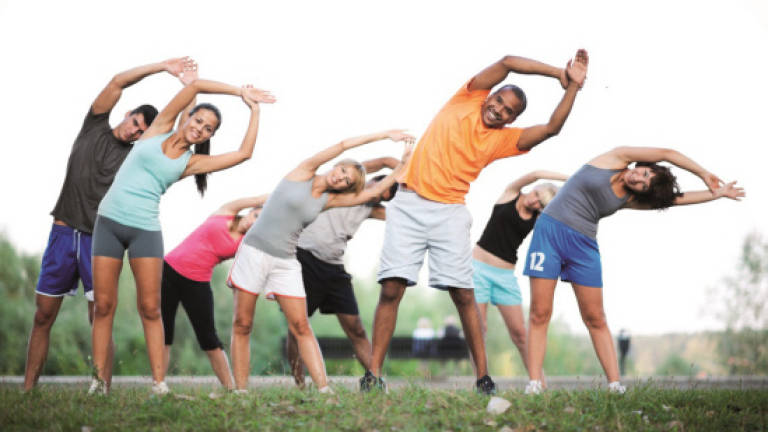Fighting Fit - Prevention better than cure

MOST of us have heard of the term 'rehab', which is short for rehabilitation. It is the process of restoring function, physical strength, and mobility after an injury.
Rehab can be used to help treat anything from a sprain to a dislocated shoulder. In some cases, rehab can also be used to help a stroke survivor walk and talk again.
Athletes undergo rehab to recover from injuries but sometimes it is too little too late. Some don't recover, and we may never see them compete again.
To prevent this from happening, strength and conditioning coaches emphasise on prehabilitation (prehab).
The concept of prehab is simple: to avoid injury and pain.
By building strength and stability around joints and tendons, while improving mobility and joint function, prehab can minimise injury during a workout.
Prehab for everyone
Prehab is not only for elite athletes or professional sportsmen.
Even if you just enjoy running on weekends or playing futsal with friends, you should focus on keeping your body in optimum working condition, to avoid being sidelined for an extended period of time.
The more active you are, the greater the need for a comprehensive prehab programme.
For example, a runner pounds the pavement with every step he or she takes. This repetitive movement can cause muscle tightness, imbalance of strength between the upper and lower body, and tight hips.
By doing prehab, the runner can open up tight muscles, iron out knots, and keep his or her joints healthy.
Even if one does not do any physical activity or play any sport, prehab is still important.
Working at a desk or spending long hours driving can also cause muscle imbalance, which could lead to a serious injury later on.
The right way
Prehab exercises or movement drills are easy enough to do, and often double as a good warm-up.
Of course, a personalised prehab programme would be ideal, but for those who do not have such resources, they should just focus on core strength, coordination, balance, stability, and mobility.
Start with foam rolling, as it helps to get rid of adhesions (knots) in muscles and connective tissue. It also increases blood flow to muscle groups to improve movement.
For stability and balance, a basic yoga routine can do the trick. It also helps with core strength if you find planking boring.
Even professional athletes are using yoga as a form of prehab.
Prehab vs rehab
It is often said that an ounce of prevention is worth a pound of cure.
That is why athletes spend hours doing prehab exercises before, during and after competition season. They do not believe in 'downtime' or 'off-season'.
They are usually with their personal trainers making sure their bodies are 'injury proof'.
Prehab also stops non-contact injuries from reoccurring, and it is much easier to prevent an injury than to rehab one.
Whether you are an athlete or someone who works long hours behind a desk while looking at a monitor, prehab is a must to keep the body running like a well-oiled machine.
Nevash Nair is a freelance writer based out of Singapore. Fitness is his passion. Follow him on Instagram @nevjitsu or contact him via email at lifestyle.nevashnair@thesundaily.com.